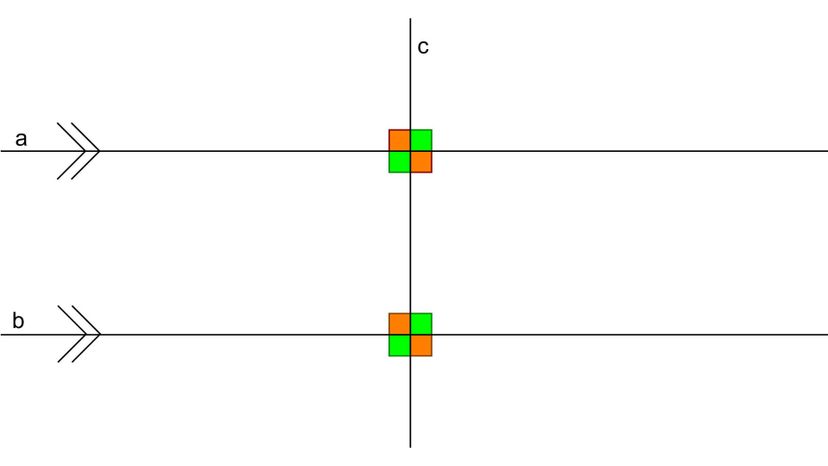
Welders and carpenters use all sorts of tools to set things at perfect 90-degree angles. A quick look at the glossary of any geometry textbook will tell you those are called "right" angles.
We see them everywhere. Many doorframes have corners set at right angles. So do lots of windows, carpets and refrigerator magnets. To paraphrase "The Red Green Show," they're a handyperson's secret weapon.
Advertisement
Right angles also should be familiar to those of us who watch team sports on the regular. Next time your favorite NFL receiver scores a touchdown, pay attention to the painted turf. The four corners of an American football field's end zone are all 90-degree angles. And these happen to be the byproducts of perpendicular lines.
Perpendicular lines cross over — or "intersect" — one another at a right angle. The orientation sets them apart from (among other things) parallel lines, which never, ever intersect by definition.

But there's another criterion here. If you want to get technical, perpendicular lines don't just intersect at 90-degree angles; they also have to be coplanar. The prefix "co-" gives us a hint about this word's meaning. Much like co-workers who earn their daily bread at the same business, coplanar lines exist on the same plane.
No, that doesn't mean they booked the same flight. We're not talking about aircraft here. A geometric plane is a flat, two-dimensional surface. Although they lack thickness, they extend infinitely far in terms of both length and width.
Anyway, if you see two intersecting, coplanar lines and don't know if they're perpendicular, study their slopes. Basically, a line's "slope" is the measure of its steepness.
Slopes can be positive or negative. On graphs, lines with positive slopes rise higher and higher above the x-axis when viewed from left to right. Negative slopes "move" the other way.
Finally, a straight line that sits parallel to the x-axis is said to have zero slope. If one of these "zero slopers" (not a real math term, but bear with us) intersects with a vertical line that's parallel to the y-axis, then presto! You've got a couple of perpendicular lines on your hands.
Things don't always work out that way. Let's suppose your intersecting lines don't parallel the graph's x and y-axes. They might still be perpendicular to each other — but only if their slopes are negative reciprocals.
Long story short, to calculate the slope of a line, you've got to divide its rise by its run. A rise is the vertical distance between two points on a straight line, as measured in the units on your graph. Runs are pretty similar, but they measure horizontal changes.
Divide the rise by the run and you'll get a fraction. And "negative reciprocals" are essentially flipped fractions. The best way to explain this is by way of example:
Assume one of our lines — which we'll call "Line A" — has a slope that looks like this: 4/3
If our other line — "Line B" — really is perpendicular to Line A, then we'd expect it to have the following slope: -3/4
Those two slopes are negative reciprocals of one another. Virtually all perpendicular lines must have negative reciprocal slopes. The only exception occurs when a line that's parallel to the y-axis intersects one with zero slope. It's just the way things are.
Advertisement